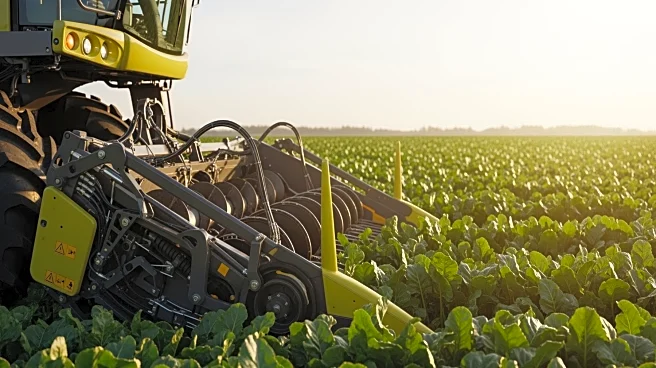What's Happening?
The expiration of the 2018 Farm Bill has left the U.S. agricultural sector in a state of uncertainty. While the 'One Big Beautiful Bill Act' (OBBBA) addressed some agricultural provisions, a comprehensive
new Farm Bill has not been passed. This has resulted in a two-tiered system where major commodity programs are secured, but many conservation initiatives, nutrition assistance programs, and support for specialty crops face an uncertain future. The legislative impasse is compounded by high input costs and volatile commodity prices, creating financial stress for farmers. Key players in the legislative process include the House and Senate Agriculture Committees, with advocacy groups pushing for a stable, comprehensive bill.
Why It's Important?
The expiration of the Farm Bill and the selective nature of OBBBA have significant implications for the U.S. agricultural landscape. Large-scale commodity producers benefit from secured programs, while small and mid-sized farmers face challenges due to reduced support. The cuts to the Supplemental Nutrition Assistance Program (SNAP) could harm local food systems and retailers reliant on SNAP beneficiaries. The legislative uncertainty exacerbates financial pressures on farmers, potentially accelerating consolidation in the sector. The situation also impacts efforts to address climate change and sustainability in agriculture, with conservation programs facing funding challenges.
What's Next?
The path forward involves potential short-term extensions or a 'skinny Farm Bill' to address unfunded provisions. The ongoing legislative gridlock may lead to further extensions or a fragmented approach to agricultural policy. The looming threat of reverting to 'permanent law' from the 1930s and 1940s poses a significant risk if no new legislation is passed by January 1, 2026. Stakeholders must navigate this uncertainty, with farmers prioritizing financial resilience and agribusinesses adapting to potential shifts in demand. The long-term goal remains a comprehensive Farm Bill that addresses diverse agricultural needs.
Beyond the Headlines
The current legislative situation reflects broader trends in American agriculture, including financial pressures and the adoption of precision agriculture technologies. The deep partisan divide over nutrition funding poses a challenge to achieving a comprehensive Farm Bill. The ripple effects extend beyond agriculture, impacting food prices, food security, and international competitiveness. The threat of 'permanent law' serves as a catalyst for congressional action, but the entrenched partisan divide complicates the legislative process.













